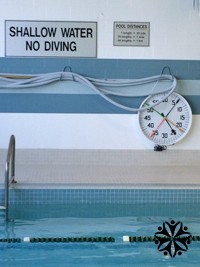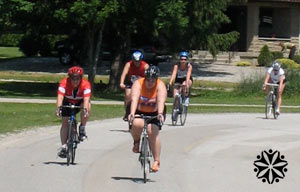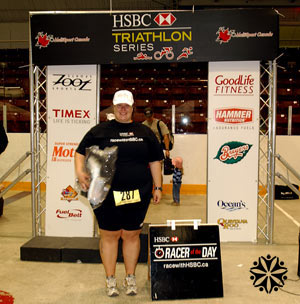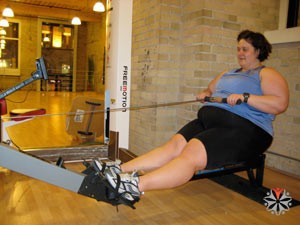 BEST SPORTS FOR BEGINNER ATHLETES
BEST SPORTS FOR BEGINNER ATHLETES
There are some activities and sports that I am better suited towards based on my body shape and weight because they allow my body to move easily, swiftly and with low impact. It doesn’t mean that I can’t participate in others (I have and it wasn’t fun) but I’ve competed enough to know what kind of experience I want. So if my skill or speed level is significantly different that I can’t keep up, contribute or compete against others (a strategy for bringing the best out in me), I choose another path that I can feel good about.
I support anyone wanting to try any sport, but also know that you can’t get from point A to Z in one move. I learned this the hard way as I was coming off a triathlon high and feeling invincible and signed up for an Ultimate Frisbee team. I was so out of my league because I couldn’t move fast enough to keep up with the pace of the game. A bit of an ego crush, but got over it and it didn’t diminish who I am, what I’ve accomplished and if Ultimate Frisbee is really important to me, it’s a goal I can work towards.
I prefer individual sports and like racing, so triathlon, 5kms, 10kms etc. are sports that work well for me because I can compete against myself, feel part of something and connected to the other athletes in these large events. I also like that they are low impact, which is kinder to the body.
Here are my top 5 best sports for beginner athletes:
Swimming
Basic Equipment Needed: Bathing suit, goggles, swim cap (accessories such as hand paddle boards or flutter boards are usually available at the pool)
Cost to Train: Minimal at city pools ($1-3 per swim) depending upon where you live, have a pool in your condo or belong a a gym with a pool
Cost to Race: Varies between each race, starts at $50
Type of Training: Aerobic and anaerobic workouts, mix of short and long interval sets
Muscles: Primarily shoulders (deltoids), back (lats), legs (glutes and hamstrings) and core
Workouts: Get a free trial at 5000 Swim Workouts
Body Impact: Low
Final Comments: Depending upon your experience, you may want to join a Masters group. I’ve seen lots of people of various shapes and sizes swim fast, as it’s all about technique.
 Cycling
Cycling
Basic Equipment Needed: Bike, helmet and cycling shorts including a dry-wicking top to keep the sweat away from your body
Cost to Train: Buying a bike is the most expensive investment, but once you have that your training ground is outside which is FREE
Cost to Race: Varies between each race, event and length of ride, starts at $50 up to $200. Fees are sometimes reduced or waived for pledges and fundraising
Type of Training: Aerobic and anaerobic, endurance with mix of short intervals to build strength
Muscles: Primarily legs (glutes, hamstrings and quads)
Workouts: Riding outside will give you lots of variety with hills and flats. Charity bike rides usually provide workout schedules to help build endurance over several weeks
Body Impact: Low
Final Comments: Whether you buy a new bike or second hand, make sure it’s in proper working order. Spending $50 to have your bike tuned up if you don’t know how to do it, is worth it. Also, learn how to change a flat tire. Your bike shop can teach you, or your local cycling club holds many workshops that you can attend.
Walking
Basic Equipment Needed: Good pair of walking/running shoes and dry-wicking athletic wear to keep the sweat away from the body
Cost to Train: Similar to cycling, you can train outdoors (FREE) or inside on a treadmill during bad weather
Cost to Race: Varies depending on the race, event and distance, starts at $50 up to $120
Type of Training: Aerobic and anaerobic, endurance with short intervals to build strength
Muscles: Primarily legs (glutes, hamstrings and quads)
Workouts: Lots of free training programs available online. Active.com Trainer has many including the popular Couch to 5Km
Body Impact: Low
Final Comments: If you’re going long, look for races that have high participation numbers i.e. Toronto Marathon, Chicago Marathon etc. My first half marathon was the Mississauga Half, relatively small. As my walking pace is slower compared to the average walker, I was by myself for the majority of the race (which just felt like a training workout) until I met up with the marathoners on the course. This meant there were limited volunteers and water stations still active by the time arrived. I also didn’t have the energy to draw from other competitors. I found it a bit of a lonely and uneventful experience. But then I’m an extrovert 🙂
 Triathlon
Triathlon
Basic Equipment Needed: Bath suit, goggles, swim cap, bike, bike helmet, cycling shorts, dry-wicking athletic wear, triathlon suit (for racing), good pair of walking/running shoes
Cost to Train: Similar to above, you can keep your costs to a minimum during good weather by training outside
Cost to Race: Super Sprints / A Give-It-A-Try begins around $50 and goes higher, the longer the distance
Type of Training: Mix of all 3 sports, typically 2 swims, 2 walk/runs and 2-3 bike rides a week, endurance with a mix of short intervals to build strength and power
Workouts: Trinewbies is a great place to start for your first try. But blending all 3 sports together takes some skill, which is why a coach would be beneficial in the beginning.
Muscles: Full body workout, involving upper and lower body muscles
Body Impact: Low
Final Comments: What I love about triathlon is that cross-fit training is built in. One day you can work your legs hard, then give them a bit of a break the next day with a swim workout. Don’t invest in a triathlon or road bike, wet suit or even a triathlon suit until you’ve tried the sport and know that you love it.
Rowing (Indoor)
Basic Equipment Needed: Indoor rower/ergometer, dry-wicking athletic wear
Cost to Train: Your biggest expense may be having to join a gym to get access to this equipment if you don’t have room in your home for one
Cost to Race: Relatively low compared to the other sports, $25. Outdoor events may be more.
Type of Training: Aerobic and anaerobic, short to medium length interval sets (1-10 min)
Workouts: Concept 2 has a great website for training techniques complete with videos and finding a coach in your area. Sign up for daily workouts.
Muscles: Primarily legs (glutes, hamstrings and quads)
Body Impact: Low
Final Comments: This sport really taught me how to pace myself so I don’t blow up. The shortest race I’ve ever competed in was the 2008 Canadian Indoor Rowing Championships (09:01:7), I took home a Bronze in my age category. To this day, it is still the hardest thing I’ve ever done. I want to do more.
All of these sports are complimented with strength training and regular stretching to keep the body from getting tight and remaining flexible and injury-free. Always have plenty of water for your workouts and afterwards. Where applicable, bring identification, a phone and some cash if you are riding/walking/running a distance, for security reasons.
![]()





